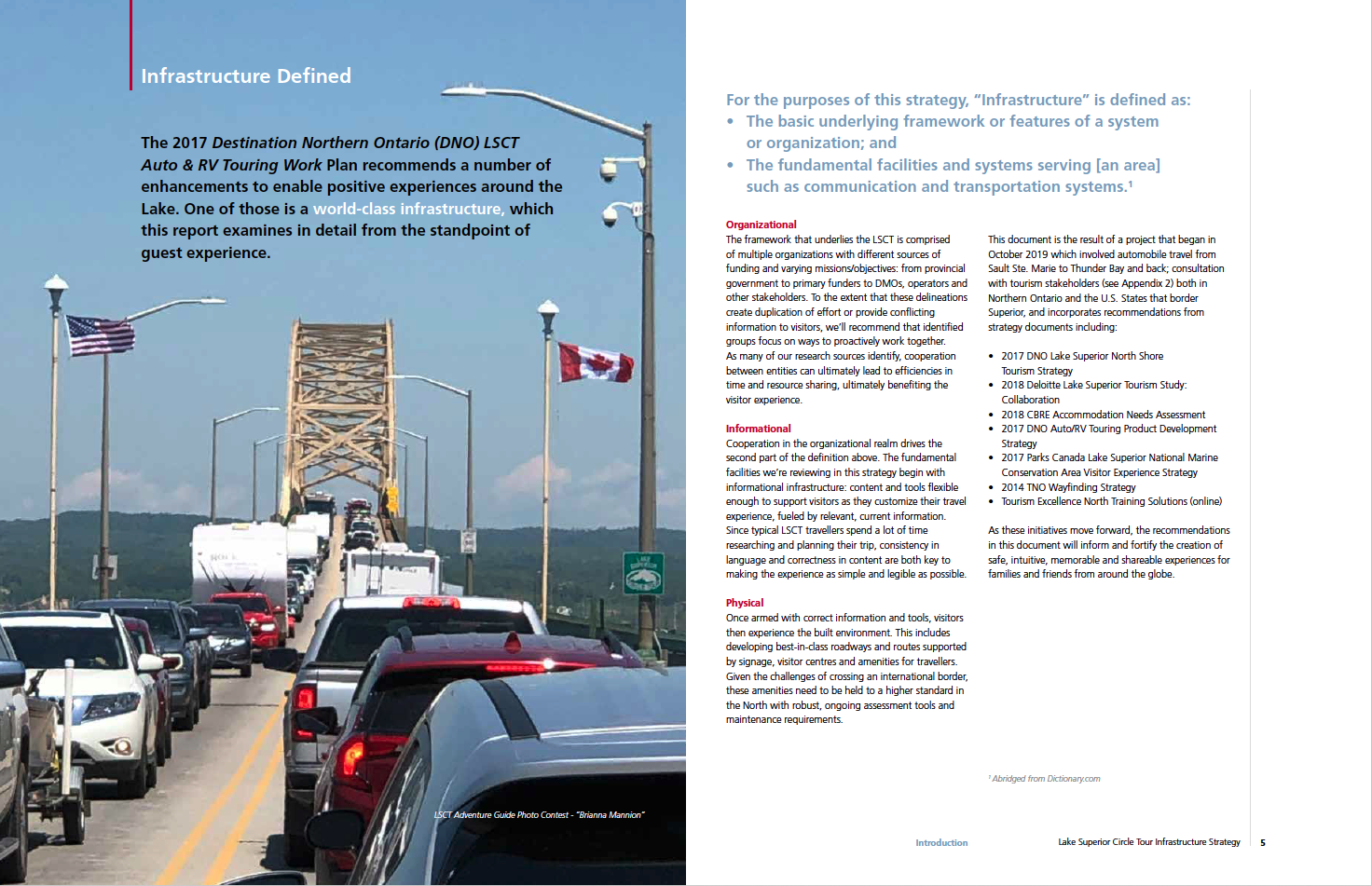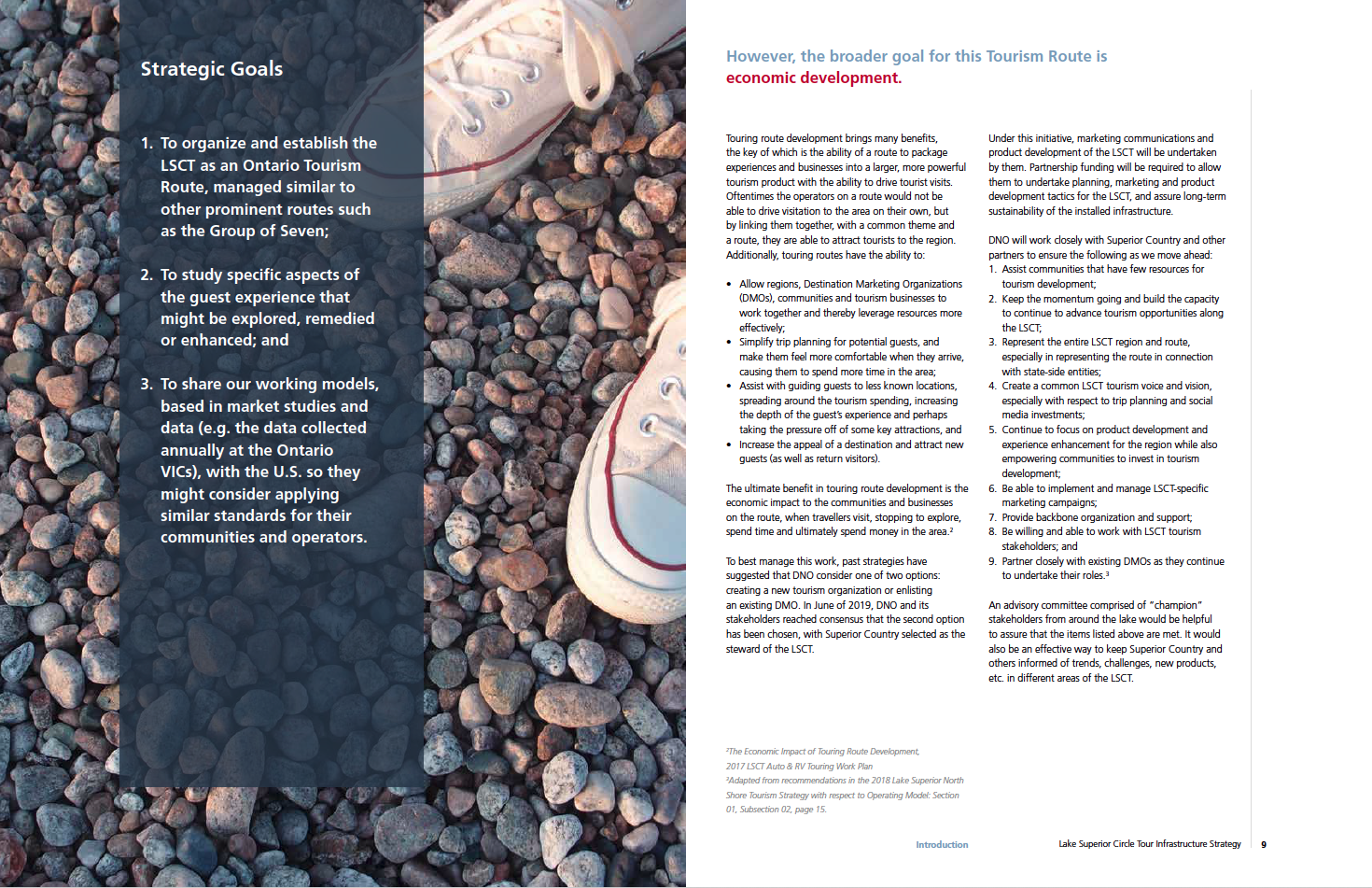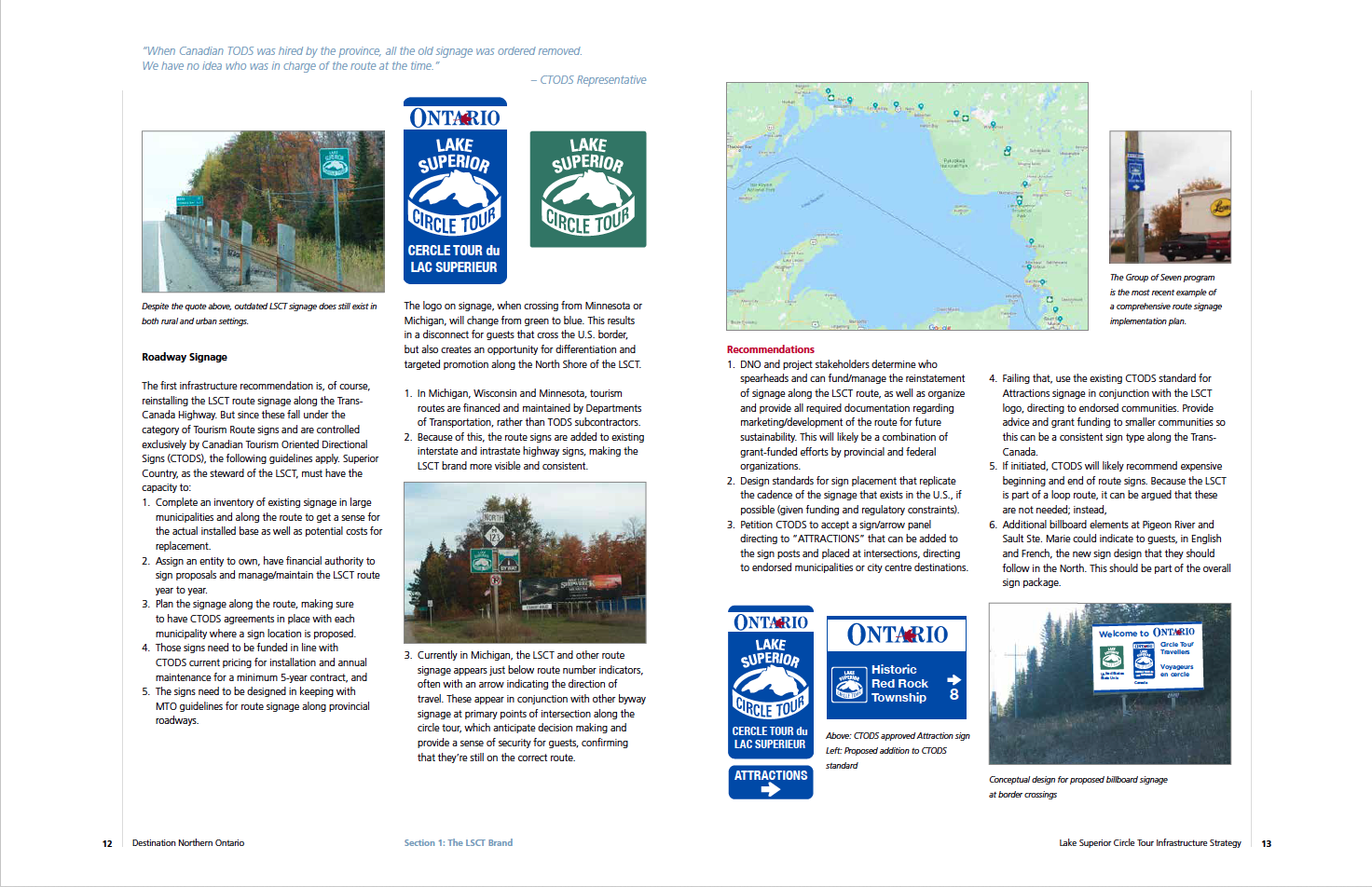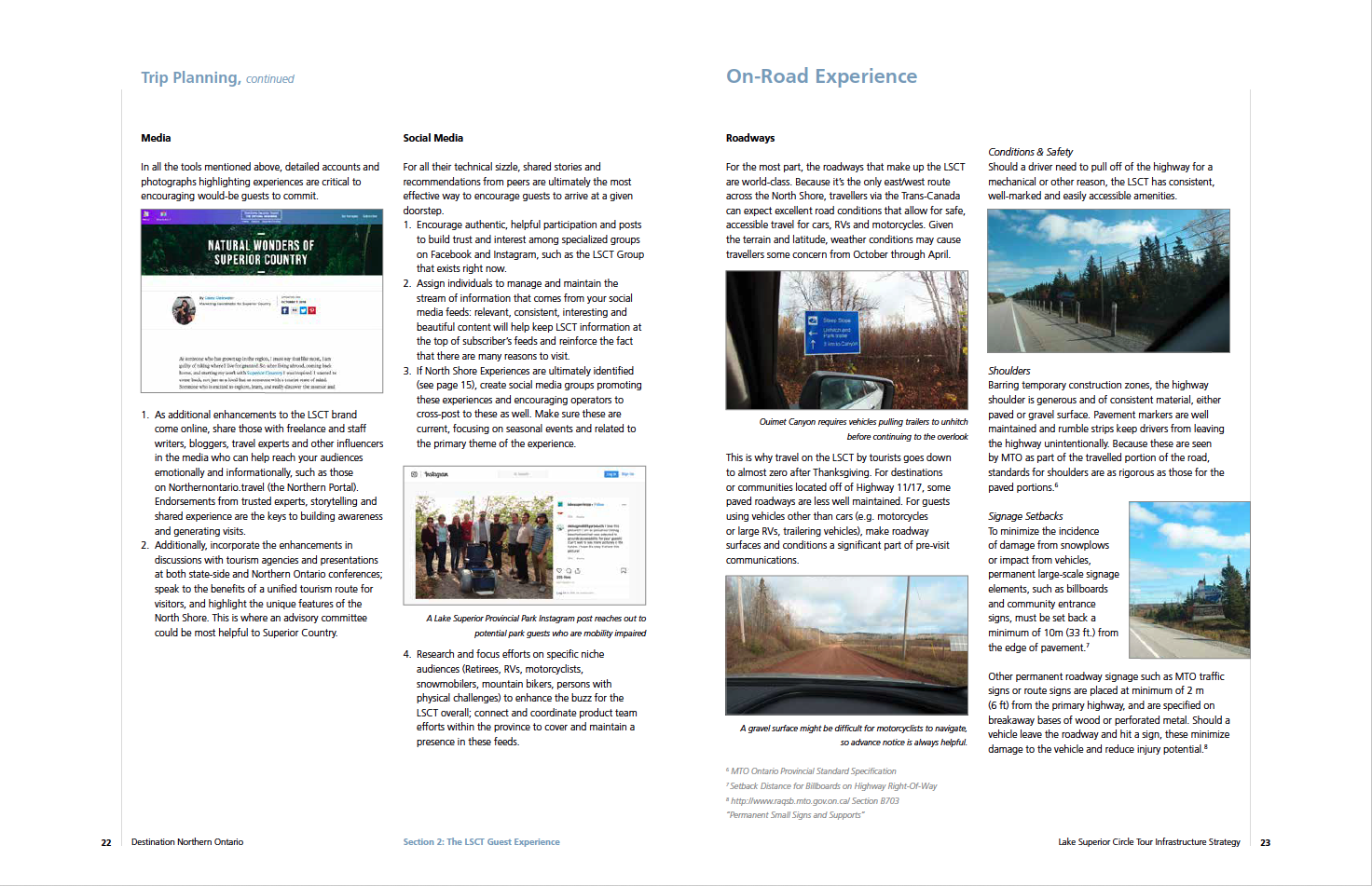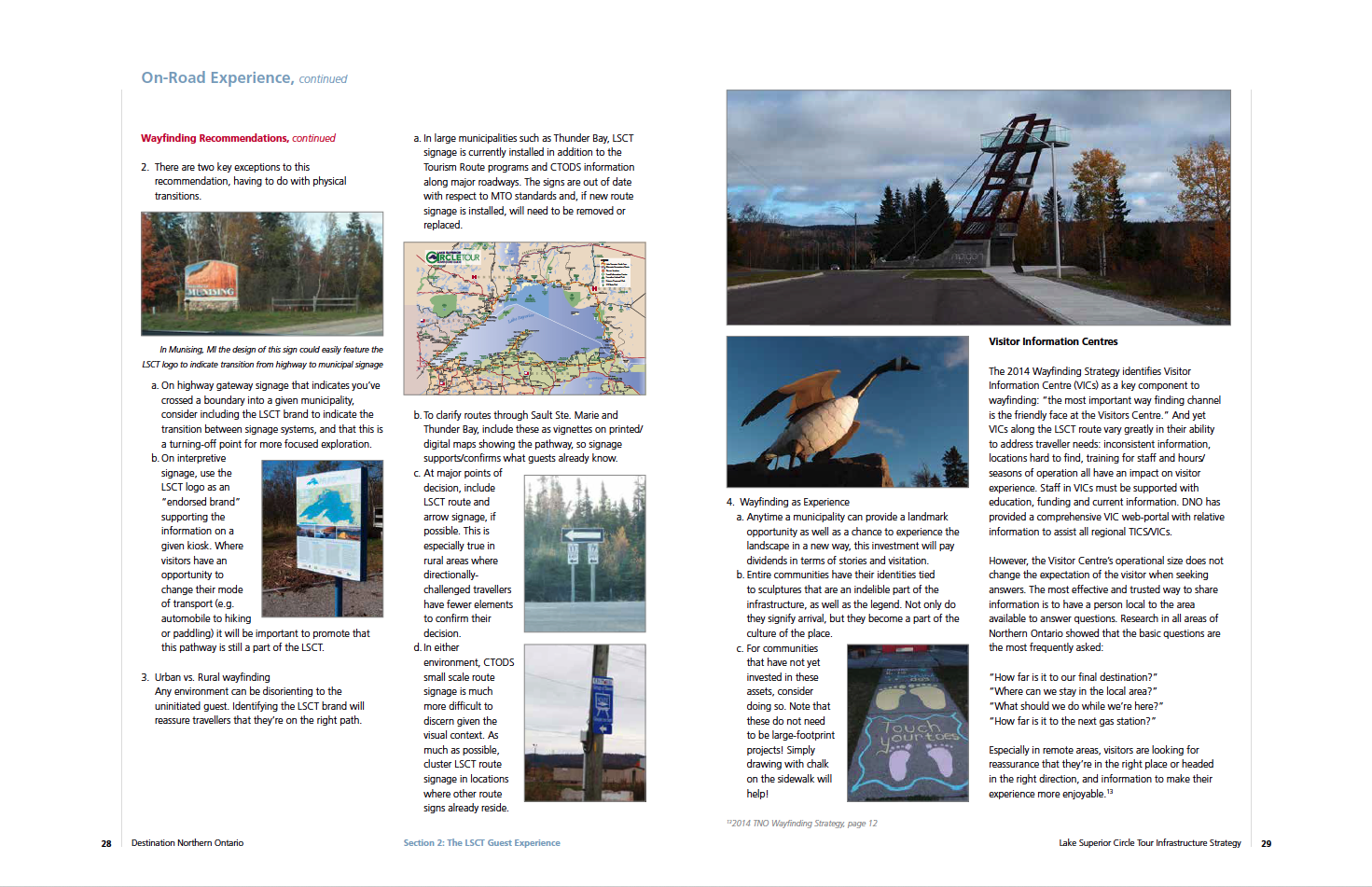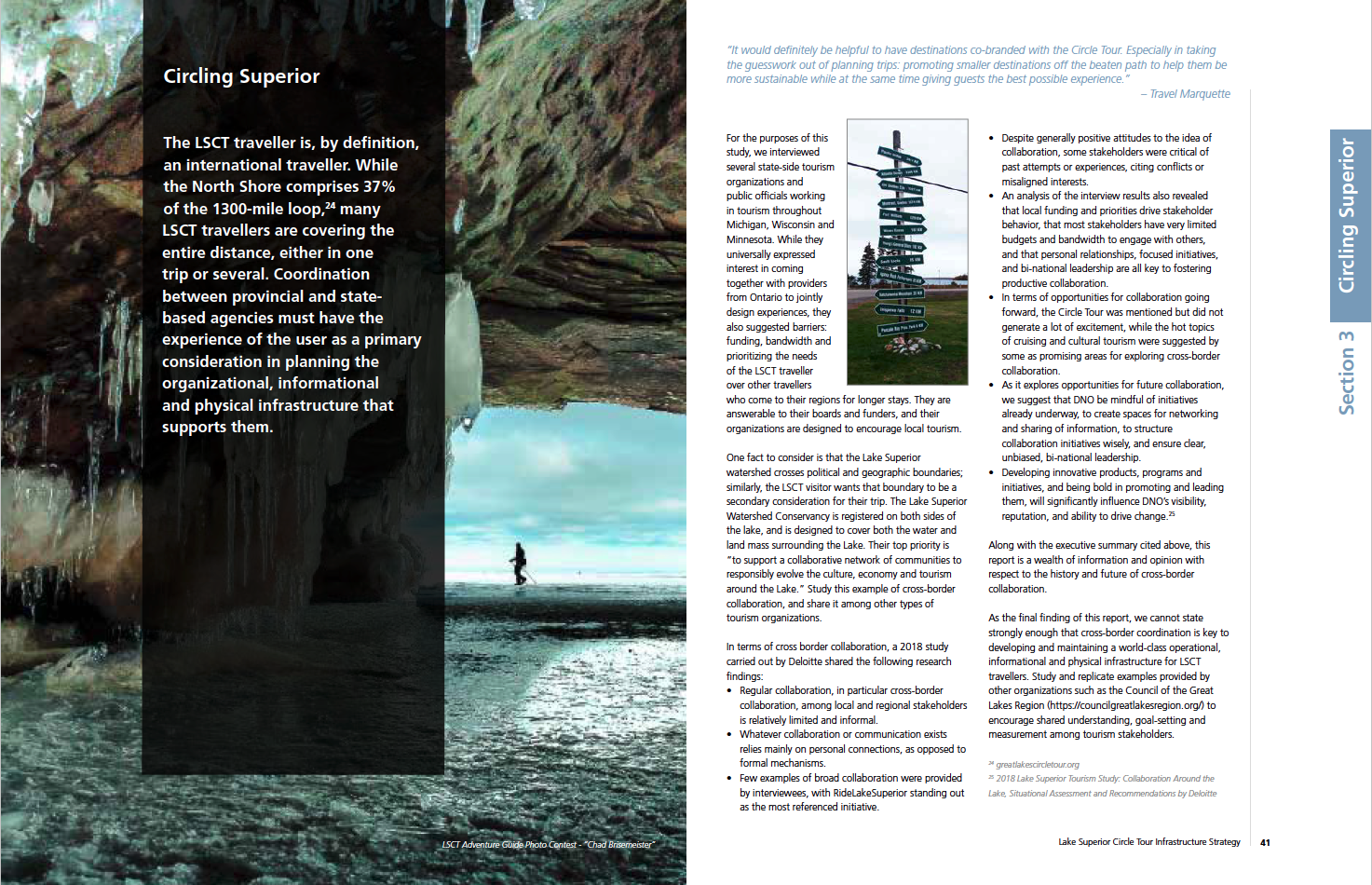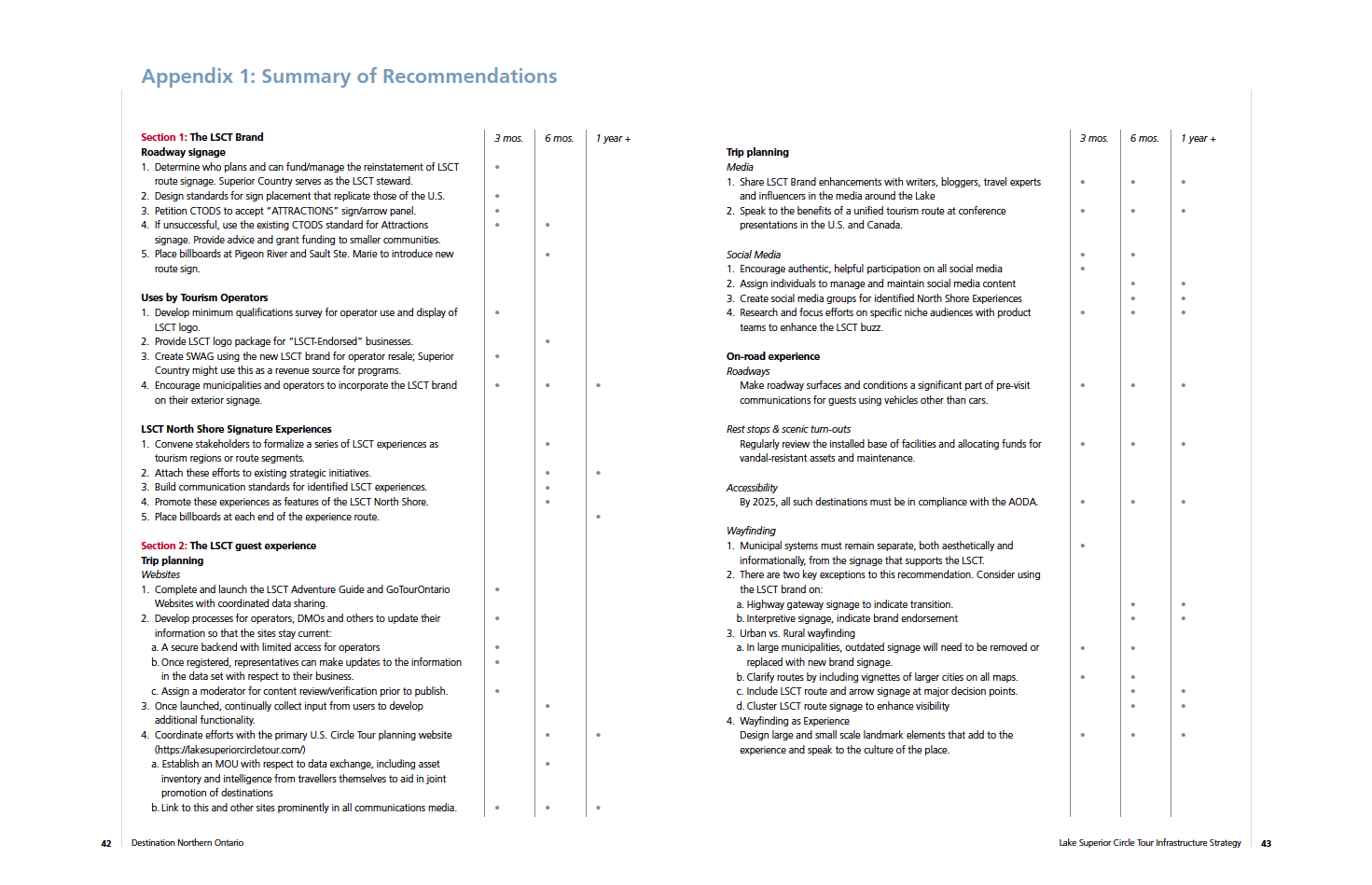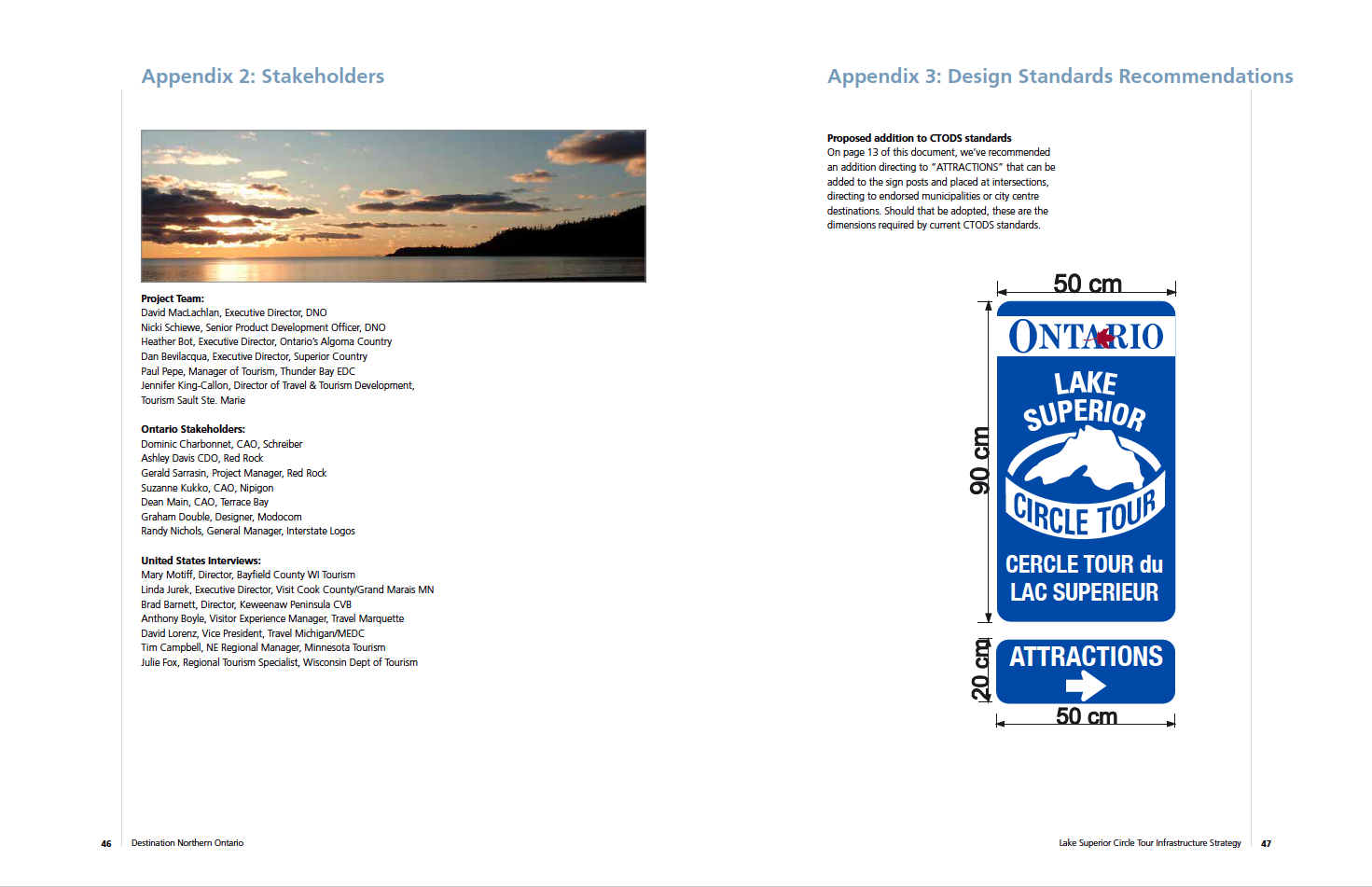No matter how you go: four wheels, two wheels, motorized or muscle-powered, on foot or by boat — circumnavigating the world’s largest freshwater lake has become a bucket list item for people around the world. The LSCT is a source of challenge, inspiration and stories between those who’ve done it and those who aspire to do it.
DNO LSCT Infrastructure Strategy
Stakeholders:
DNO Executive Staff; DMO leaders; US and Canada-based municipal and tourism officials; Visitor Centre staff; provincial contractors; tourism business owners and fellow travelers
Human-Centered Design Services:
Research, Facilitate, Communicate, Conceptualize
Destination Northern Ontario (DNO) works together with tourism businesses, professionals and destinations at a local, regional and global level to build a strong tourism industry in Northern Ontario.
We drove the North Shore of the Lake Superior Circle Tour (LSCT) in October, 2019 and experienced the trip first-hand. There are three types of infrastructure that impact tourism experiences: organizational, informational and physical. We recommended ways to strengthen and diversify connections between Destination Marketing Organizations (DMOs) and tourism businesses, both in the US and Canada.
Click the “Connect with Us” button for a PDF of the Strategy.
Throughout this project, Mark was able to adhere to DNO Visitor Experience project parameters and successfully acted as a facilitator, researcher, writer and designer. He delivered on objectives and managed many relationships with key stakeholders. He engaged our board and industry partners through stakeholder sessions and at multiple industry conferences.
I am confident with their incredible experience and a track record of success, Connect_CX will deliver a successful initiative on your behalf.
David MacLachlan, Executive Director, Destination Northern Ontario
Research & Facilitate
DNO engages a host of consultants in studying the current and future state of tourism in the North. One of these, the 2017 Auto & RV Tourism Plan, identified infrastructure as a key component of the guest experience on Ontario’s North Shore (from Neebing Ontario in the west to Sault Ste Marie Ontario in the east).
We interviewed tourism, governmental and design stakeholders from around the lake to understand their needs with respect to the LSCT guest. We came to appreciate the complexity of the trip for visitors given the various funding models, jurisdictional constraints, support for the route by departments/ministries of transportation, and crossing an international border to complete the journey. We held regular virtual meetings with our project’s Core Team to review and shape our findings.
Communicate: Defining Infrastructure, Challenges and Opportunities
Credit: Brianna Mannion, LSCT Adventure Guide Photo Contest
The LSCT traveler is, by definition, an international traveler. While the North Shore comprises 37% of the 1300-mile loop, many LSCT travelers are covering the entire distance, either in one trip or several. For the purposes of this strategy, “Infrastructure” is defined as:
The basic underlying framework or features of a system or organization; and
The fundamental facilities and systems serving an area, such as communication and transportation systems.
We identified three types:
Organizational: The framework that underlies the LSCT is comprised of multiple organizations with different sources of funding and varying missions/objectives: from provincial government to primary funders to DMOs, operators and other stakeholders. To the extent that these delineations create duplication of effort or provide conflicting information to visitors, it’s imperative that identified groups focus on ways to proactively work together. As many of our research sources identify, cooperation between entities can ultimately lead to efficiencies in time and resource sharing, ultimately benefiting the visitor experience.
Informational: Cooperation in the organizational realm drives the second part of the definition above. The fundamental facilities we reviewed in the strategy begin with informational infrastructure: content and tools flexible enough to support visitors as they customize their travel experience, fueled by relevant, current information. Since typical LSCT travelers spend a lot of time researching and planning their trip, consistency in language and correctness in content are both key to making the experience as simple and legible as possible.
Physical: Once armed with correct information and tools, visitors then experience the built environment. This includes developing best-in-class roadways and routes supported by signage, visitor centres and amenities for travelers. Given the challenges of crossing an international border, these amenities need to be held to a higher standard in the North with robust, ongoing assessment tools and maintenance requirements.
Challenges
Ministry of Transportation Ontario dictates that all route signage appear on a blue field, in English and French language. In the US, the logo is on a green field and presented in a square.
Route origination and maintenance: the LSCT route isn’t supported by current signage in the North
Brand disconnects: the logo changes when you cross the border
Democratize benefits for all communities along the LSCT
Accessibility for Ontarians with Disabilities Act (AODA) Compliance
Consistent communication: sharing data and resources across organizational and political boundaries
Opportunities
Use and elevate the LSCT Brand: promote it among communities and operators
Endorse communities and destinations to assure a consistent level of quality, accessibility and experience design.
Promote featured experiences along the North Shore route to attract more US travelers north of the border
Improve and promote planning tools: trip planning is the first and often the most important part of the experience
Joint promotion of tourism assets and experiences with Stateside entities.
Conceptualize
The strategy reviews all aspects of the guest experience in detail, from the history and use of the brand, recommendations for building a new LSCT route plan including sponsorship and long-term maintenance, and a suggestion that LSCT North Shore Signature Experiences be emphasized to bring people north of the US border.
We reviewed existing and future trip planning tools and all aspects of the on-road and off-road experiences: from rest areas, accessibility, visitor centres and wayfinding to lodging, land- and water-based trails, traveler amenities and the ability of LSCT travelers to share their experiences via social media.
If you’re interested in seeing the full document, please reach out via our connect form and we’ll be happy to send you a PDF version!




